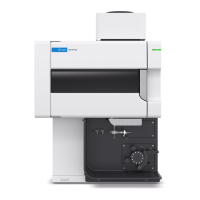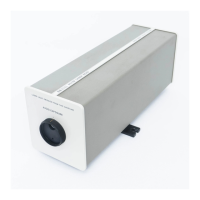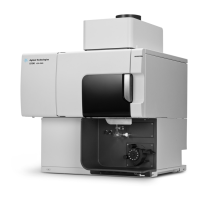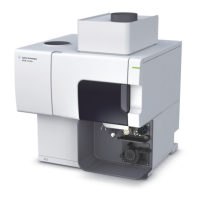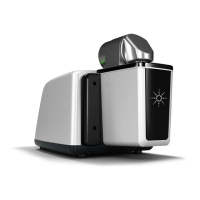Operating in Chemical Ionization (CI) Mode 4
5975 Series MSD Operation Manual for MassHunter 103
The CI GC/MSD Interface
The CI GC/MSD interface (Figure 20) is a heated conduit into the MSD for the
capillary column. It is bolted onto the right side of the analyzer chamber, with
an O-ring seal and has a protective cover which should be left in place.
One end of the interface passes through the side of the GC and extends into
the oven. It is threaded to allow connection of the column with a nut and
ferrule. The other end of the interface fits into the ion source. The last 1 to
2 millimeters of the capillary column extend past the end of the guide tube
and into the ionization chamber.
Reagent gas is plumbed into the interface. The tip of the interface assembly
extends into the ionization chamber. A spring-loaded seal keeps reagent gases
from leaking out around the tip. The reagent gas enters the interface body and
mixes with carrier gas and sample in the ion source.
The GC/MSD interface is heated by an electric cartridge heater. Normally, the
heater is powered and controlled by Thermal Aux #2 heated zone of the GC.
For 6850 Series GCs, the heater is connected to the auxiliary thermal zone.
The interface temperature can be set from MassHunter or from the gas
chromatograph. A sensor (thermocouple) in the interface monitors the
temperature.
This interface is also used for EI operation in CI MSDs.
The interface should be operated in the 250 to 350 C range. Subject to that
restriction, the interface temperature should be slightly higher than the
maximum GC oven temperature, but never higher than the maximum column
temperature.
See Also
“To Install a Capillary Column in the GC/MSD Interface” .
CAUTION
Never exceed the maximum column temperature, either in the GC/MSD interface, the
GC oven, or the inlet.
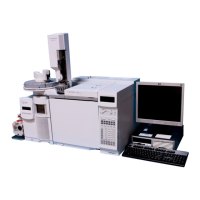
